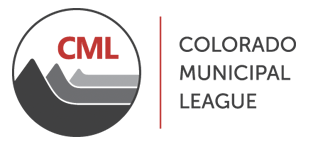State of Our Cities & Towns
In This Section
2024 State of Our Cities & Towns
Colorado Municipal League’s (CML) 2024 State of Our Cities and Towns survey, administered from October to November 2023, explored the fiscal and operational impacts of public liability from claims, lawsuits, and unfunded state mandates on municipalities across Colorado. Rising insurance premiums and state mandates related to technology accessibility, body-worn cameras for law enforcement, and wastewater quality emerged as the primary budgetary challenges for cities and towns.Municipalities identified affordable housing as the top concern heading into 2024, an issue that also topped the list in 2021 and 2022. Unfunded street maintenance ranked second while inflation, the top challenge for municipalities in 2023, dropped to third on the list.
Most municipalities, regardless of geographic region or population size, reported their local economy performing similarly in 2023 to 2022. And though most cities and towns said municipal revenues improved or stayed the same when compared to last year, survey data shows that municipal revenue growth has been on the decline across the state since 2021.
The 2024 report features stories on small towns, such as Yampa and Parachute, taking action to confront rising insurance costs, Manitou Springs’ efforts to gain compliance with state technology accessibility standards, Lone Tree’s creative approach to law enforcement accountability laws, and Alma and Creede’s attempts to meet state wastewater quality regulations.
Key findings of the survey include:
Economic data:
- 44% of respondents reported their local economy performing about the same in 2023 as in 2022
- 38% of respondents reported their municipal revenues were about the same in 2023 as in 20222 while 37% reported their revenues as much or somewhat better
- Municipalities located in the Front Range and those with over 25,000 people were more likely to report revenue improvements than mid-sized and small cities and towns
- Investment and interest income, charges for services, property taxes, and sales and use taxes emerged as the top increased revenue sources for responding municipalities
Rising costs of insuring municipal operations:
- Survey data shows that the larger a municipality, the more likely the city or town is to hold more lines of insurance (excluding those that remain self-insured)
- More than 50% of respondents reported price increases of 10% or more for law enforcement liability, property, general liability, and auto liability
- Respondents identified law enforcement liability as incurring the greatest cost increase in recent years
- About 70% of respondents reported not taking any action in response to increasing insurance costs in recent years due to lack of time to shop around, among other reasons
Public entity liability:
- The majority of responding municipalities received, on average, one to 10 notices of claims annually throughout the last five years
- On average, less than one lawsuit was brought against responding municipalities throughout the last five years
- Respondents identified law enforcement lawsuits as the most common type of litigation filed against them. Large cities were the most likely to encounter law enforcement related lawsuits.
- 86% of respondents said legal costs have not affected their ability to provide municipal services in recent years
Compliance with unfunded state mandates:
- 45% of respondents reported awareness of the financial impacts of unfunded state mandates in recent years
- The larger the municipality, the more awareness a city or town has of such mandates. One hundred percent of large cities reported awareness of unfunded state mandates.
- Respondents reported updating technology, increasing staff training, and relying on outside vendors to perform services to comply with unfunded state mandates
- More than 50% of respondents reported relying on existing funds to pay for such actions
- 44% of respondents reported state mandates around technological accessibility impacting their finances
- Municipalities estimate compliance will cost between $5,000 and $800,000 in total
- 26% of respondents reported state mandates around body-worn cameras for law enforcement impacting their finances
- Municipalities estimate compliance will cost between $17,000 and $2.3 million annually
- 23% of respondents reported state regulations around wastewater quality impacting their finances
- Municipalities estimate compliance will cost between $800,000 to $50 million in total

